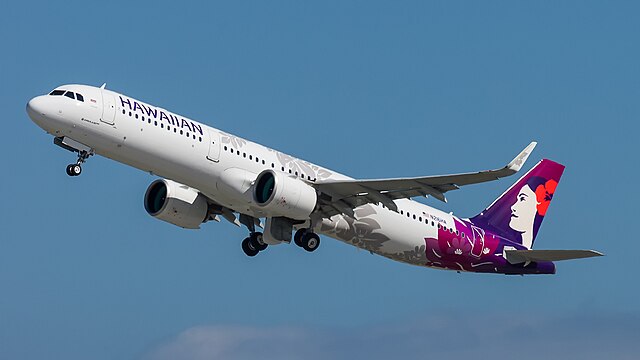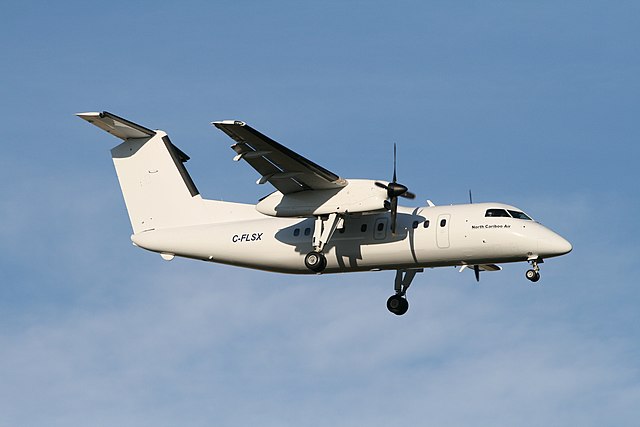Skytrans DH8A at Chinchilla on May 23rd 2022, engine control problem, wheel lock up and runway excursion on landing
Last Update: October 11, 2023 / 12:12:21 GMT/Zulu time
Incident Facts
Date of incident
May 23, 2022
Classification
Report
Airline
Skytrans Regional
Flight number
QN-733
Departure
Brisbane, Australia
Destination
Chinchilla, Australia
Aircraft Registration
VH-QQB
Aircraft Type
De Havilland Dash 8 (100)
ICAO Type Designator
DH8A
The Australian TSB released their final report concluding the probable causes of the incident were:
Contributing factors
- After landing, the anti-skid system activated when the outer right main wheel locked up, resulting in reduced braking effectiveness.
- While managing the combination of unrelated technical failures affecting directional control, the aircraft veered off the narrow runway.
Other factors that increased risk
- The operator’s procedures for managing an ECU failure did not include consideration of other factors that could increase the required landing distance, including a tailwind and a wet runway, or that a narrow runway increased the risk of a veer off due to asymmetric thrust.
- The acceptable means of compliance guidance material did not clearly convey the intention of the Civil Aviation Safety Regulations 1998 - Part 121 (Australian larger aeroplanes) Manual of Standards 2020 subsections 9.10 – 9.13 that landing performance must be assured at all times.
The ATSB analysed:
After experiencing an ECU failure on the right engine during flight, the flight crew consulted the operator procedures and opted to continue with the planned flight based off that guidance. The pilot flying (PF) had also experienced ECU failures before and was comfortable managing the limitations associated with the failure. The flight crew knew they would not have reverse thrust available on the right engine to assist with slowing the aircraft upon landing, however they had a plan for how to manage that limitation.
The aircraft landed longer than the flight crew intended, but probably still within the touchdown zone. However, this reduced the runway length available to stop the aircraft. The tail wind and the wet runway may have also increased the stopping distance required.
Upon landing the outer right tyre locked up, causing the anti-skid system to activate and release brake pressure on both outboard wheels. The reason for the lock up could not be determined, but it resulted in only the inboard wheels providing a braking force. The reduced braking effectiveness was a surprise to the pilots as they were not expecting any issues with braking performance, other than the lack of reverse thrust on the right engine. In response, the main focus of the flight crew became stopping the aircraft before the end of the runway.
That focussed attention resulted in the flight crew missing a standard call, which would have prompted the captain to transition to the tiller for directional control. As the crew did not assess that the aircraft was at risk of a lateral runway excursion, this missed call was not detected and their focus remained on stopping the aircraft in the remaining runway. However, as they were landing on a narrow runway the margin for error was reduced, and in the final stages of the landing roll the left landing gear departed the sealed runway surface. The flight crew were unaware of the runway excursion until after conducting a walk around of the aircraft and seeing mud on the tyres.
The operator’s procedures for managing an ECU failure that were utilised by the flight crew when assessing whether to continue with the planned flight were ineffective at prompting the crew to consider other unrelated factors that could affect landing distance. For example, there was no consideration of the impact of a tailwind, a wet runway, or the risk of a runway excursion off a narrow runway due to the asymmetric deceleration associated with the ECU failure.
The operator had a procedure that required the crew to calculate landing performance for the reported runway surface conditions. The expectation was that these would be checked in-flight and provide the assurance of landing performance prior to arrival.
Part 121 MOS that replaced the CAO under the regulatory reform, required the crew to perform an in-flight performance calculation based on reports and forecasts valid at the time of arrival. In explanatory documentation produced by CASA,16 which included reference to FAA SOFO 19001, it was acceptable to conduct an in-flight planning check during the descent, but not after the commencement of the approach procedures or visual approach.
CASA advised that this should be interpreted to mean that where an arrival takes place to a runway that is forecast and reported to be dry, but upon arrival is found to have visible moisture on its surface, then the landing must not be continued until the wet landing performance is known. This may require a missed approach to allow time for the crew to confirm, by calculation, that the wet performance can be assured prior to landing.
However, the explanation in the acceptable means of compliance guidance material did not clearly convey this intention and did not make the requirement to discontinue the approach clear in the event the runway surface was unexpectedly wet.
Incident Facts
Date of incident
May 23, 2022
Classification
Report
Airline
Skytrans Regional
Flight number
QN-733
Departure
Brisbane, Australia
Destination
Chinchilla, Australia
Aircraft Registration
VH-QQB
Aircraft Type
De Havilland Dash 8 (100)
ICAO Type Designator
DH8A
This article is published under license from Avherald.com. © of text by Avherald.com.
Article source
You can read 2 more free articles without a subscription.
Subscribe now and continue reading without any limits!
Read unlimited articles and receive our daily update briefing. Gain better insights into what is happening in commercial aviation safety.
Send tip
Support AeroInside by sending a small tip amount.
Newest articles
Hawaiian A21N and private C172 at Long Beach on Oct 26th 2023, near midair collision
A Hawaiian Airlines Airbus A321-200N, registration N216HA performing flight HA-70 from Honolulu,HI to Long Beach,CA (USA), was cleared to land on…
Creebec DH8A at Val d'Or on Oct 26th 2023, near collision with terrain
An Air Creebec de Havilland Dash 8-100, registration C-FLSX performing flight YN-238 from Chisasibi,QC to Val d'Or,QC (Canada) with 28 passengers and…
Subscribe today
Are you researching aviation incidents? Get access to AeroInside Insights, unlimited read access and receive the daily newsletter.
Pick your plan and subscribePartner

ELITE Simulation Solutions is a leading global provider of Flight Simulation Training Devices, IFR training software as well as flight controls and related services. Find out more.
SafetyScan Pro provides streamlined access to thousands of aviation accident reports. Tailored for your safety management efforts. Book your demo today
AeroInside Blog
Popular aircraft
Airbus A320Boeing 737-800
Boeing 737-800 MAX
Popular airlines
American AirlinesUnited
Delta
Air Canada
Lufthansa
British Airways

